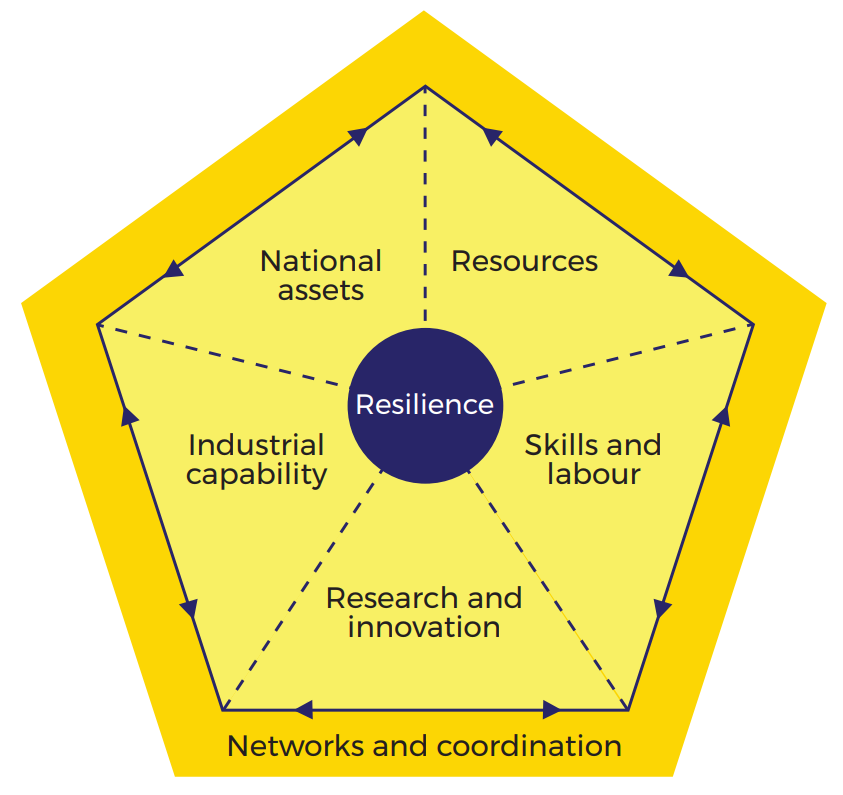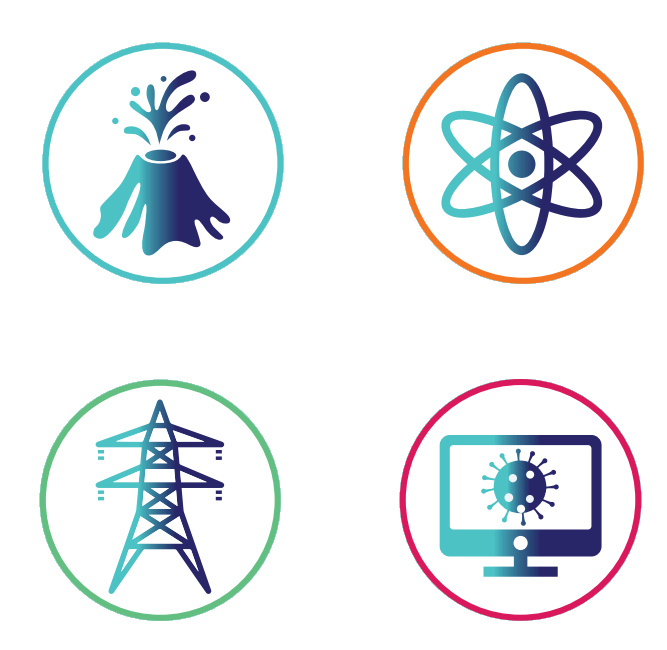Critical capabilities
This report identifies six interdependent critical capabilities:
- Resources, including data, materials and funds
- Skills and labour, including the workforce, training capability and those with expert skills
- Research and innovation, including the institutions, facilities and expertise for innovation
- Industrial capability, including manufacturing, analysis and logistics
- National assets, including physical and digital infrastructure and institutions
- Networks and coordination, including communication networks, mobilisation of expertise and cross sector coordination

The six interdependent critical capabilities, with networks and coordination acting as a bridge across all capabilities
Case studies
We explored these critical capabilities through case studies of four past emergencies to examine how they were brought together and deployed. We identified the challenges and enablers which hindered or supported effective response.
The selected case studies included:
- The Eyjafjallajökull volcanic eruption in 2010
- The UK's response to the Fukushima nuclear accident in 2011
- The Lancaster flooding and resulting electricity outage in 2015
- The WannaCry ransomware incident affecting the NHS in 2017
Case studies were chosen to reflect a range of emergency characteristics, including physical versus digital disruption, central versus local coordination and national versus international impact. The case studies highlight instances where not all the relevant stakeholders were considered, or where interconnections weren’t strong enough or leveraged effectively at the onset of the emergency.
You can read more about the report's methodology in this blog post.

A graphical representations of the four case studies
Practices for preparedness
Through exploring the case studies, we tested and built a broad consensus of the critical capability groups and identified several cross-cutting lessons:
- Understanding: mapping of national, local and organisational capabilities, what they can provide and identification of gaps.
- Relationships: building and maintaining a network of networks of local, national and international relationships.
- Resilience by design: improving preparedness and response of organisations, processes, infrastructure, and facilities.
- Responsibility: ensuring clear ownership of resilience at every level.
- Exercise: practising responses to build relationships, increase awareness of existing capabilities and better prepare for a range of emergency situations.
- Agility: keeping pace with increasing digital interconnectedness and evolving threats and hazards.
We are calling upon leaders across all sectors to reflect upon the extent to which these practices for preparedness are incorporated in their continuity or emergency response planning, and to act upon them.
Recommendations for government
For governments, emergency response at scale requires effective coordination of capabilities across the public, private and the third sector. While it is challenging to incorporate coordination across all emergency processes, the case studies highlight the necessity of effective coordination.
We propose that government's emergency processes may be improved by implementing the practices for preparedness. Implementation should be guided through considering critical capabilities, and by taking a wider, systems-based view of the challenges.
We call on government to partner with the engineering profession and others to:
- Embed an engineer’s systems approach to emergency planning and preparedness, looking across the public and private sector stakeholders.
- Carry out an audit to map existing public, private and third sector capabilities and convening bodies against the critical capability groups. An aim of the audit should include developing a reporting framework to engage the private sector and build a practical mechanism to keep the audit as live as possible.
- Develop the critical capabilities approach into a practical tool for emergency planning, preparedness and resilience that builds on existing capabilities programmes. This should include embedding the practices for preparedness alongside current foresight and horizon scanning methods and exercises to identify and ensure that the right capabilities are in place to respond effectively and with agility to future scenarios and risks.
We discussed these recommendations with the National Preparedness Commission who produced a blog outlining the discussion.
